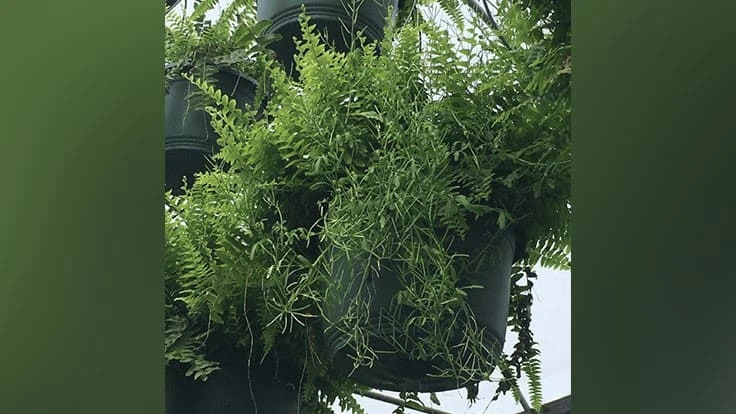

The gardening season has come and, as every year before this one, gardeners will spend a significant amount of time battling weeds. While greenhouse growers may grow their plants inside a controlled environment, they do not have the luxury of avoiding weeds and the problems they create. From outside to inside the greenhouse, weeds can cause headaches that may become persistent if not controlled. However, weeds can be managed with a little diligence and persistence.
The problem with weeds
Weeds are commonly defined as a “plant out of place.” However, weeds aren’t problematic in greenhouse crop production simply because they are out of place. There are several problems they create for containerized-greenhouse-crop production. Weeds left to go to seed, whether outside or inside the greenhouse, can produce seeds that can contaminate the growing area and, worst of all, containers with plants growing in them (Fig. 1). Containerized plants with weeds growing in them have a reduced or no marketability — or increase costs to make them marketable. Weeds serve as a refuge for insects, supporting populations of pests that can infest crops and transmit viruses. Weeds can also serve as host plants and carry diseases that may infect crops.
Prevention
The most efficient way to manage weeds is to keep them from establishing around and inside greenhouse facilities. There are no pre-emergent herbicides labeled for use in a greenhouse, so weeds need to be prevented from establishing in the greenhouse.
There are several ways to keep weeds from entering the facility. First, keep the perimeter outside of the facility clean: Regular mowing can help keep weeds from developing and, most importantly, producing seed which can be carried inside. In addition to managing vegetation through mowing, an even cleaner perimeter can be maintained by using rock mulch.
Like the perimeter of the greenhouse, also keep the interior clean. Cement floors are the easiest surface to keep free of weeds. Bare soil should always be avoided inside the greenhouse, just like outside of the facility. Crushed gravel and weed-barrier landscape fabric can be used to cover any bare ground that would allow weeds to establish. In addition to minimizing bare ground, free and standing water should be reduced by modifying irrigation practices as cultural practices allows — this will inhibit weed growth and development on floors.
Another source of weeds can be growing substrate. Before reusing any old substrate that has been stored outside or using any field soil coming in from outdoors, be sure to pasteurize it to make sure that weed seed therein isn’t viable. The most common practice is to steam substrate for 30 minutes.

Control
Although preventing weeds should be a priority, it is common to have to control them after they are established. Once this happens in and around facilities, additional steps are needed to prevent them from spreading further
One of the first steps to take is to reduce or eliminate weeds surrounding the greenhouse. Large areas can be mowed; however, to avoid a mass-migration of insects from outside to the inside the facility as weeds die, kill insect pests in weeds first before killing the weeds themselves. This will reduce pest populations to prevent pests from heading into the greenhouse.
Weeds serve as a refuge for insects, supporting pests that can infest crops and transmit viruses. Weeds can also serve as host plants and carry diseases.
In addition to mowing, herbicides can be used to manage weeds outside the facility. When herbicides are used around the exterior greenhouse perimeter, be sure to avoid any adverse impacts on plants inside the structure. Drift after herbicide application can damage plants inside the greenhouse, so be sure to keep all vents and other air inlets closed when the exterior areas are treated with herbicide. Additionally, avoiding herbicides that easily volatilize will help minimize the risk of drift and phytotoxicity to crops inside the facility.
Take-home message
The list of tasks to keep up with in any greenhouse is long, but attention is best focused on growing marketable plants instead of growing weeds. From the outside to the inside, a variety of cultural, mechanical and chemical approaches can be used to manage weeds in production. Take a proactive approach to minimizing weeds and the negative impacts weeds can have on production. This will focus attention to the plants in the greenhouse that matter most.

Explore the May 2020 Issue
Check out more from this issue and find your next story to read.
Latest from Greenhouse Management
- Anthura acquires Bromelia assets from Corn. Bak in Netherlands
- Top 10 stories for National Poinsettia Day
- Langendoen Mechanical hosts open house to showcase new greenhouse build
- Conor Foy joins EHR's national sales team
- Pantone announces its 2026 Color of the Year
- Syngenta granted federal registration for Trefinti nematicide/fungicide in ornamental market
- A legacy of influence
- HILA 2025 video highlights: John Gaydos of Proven Winners





